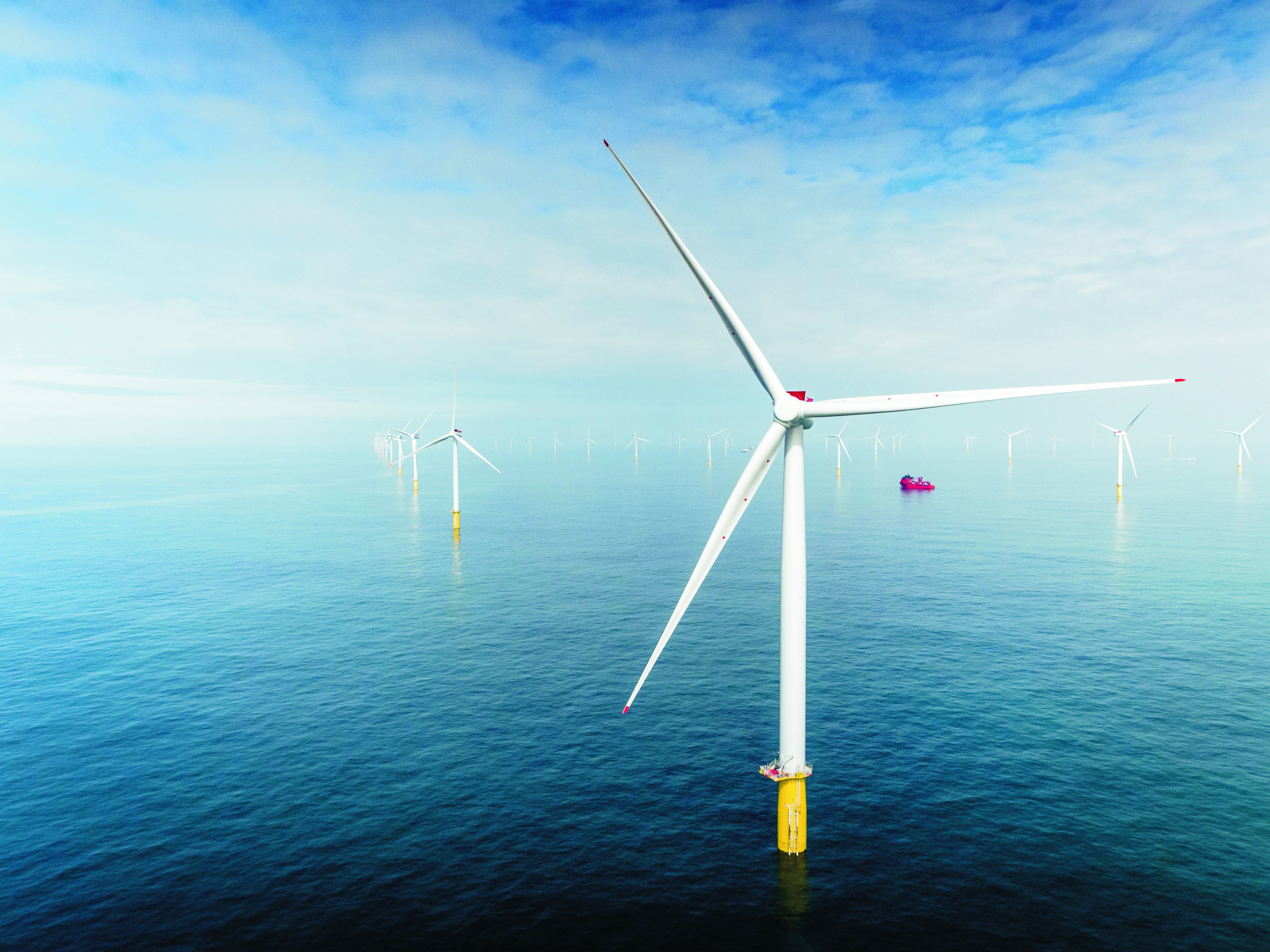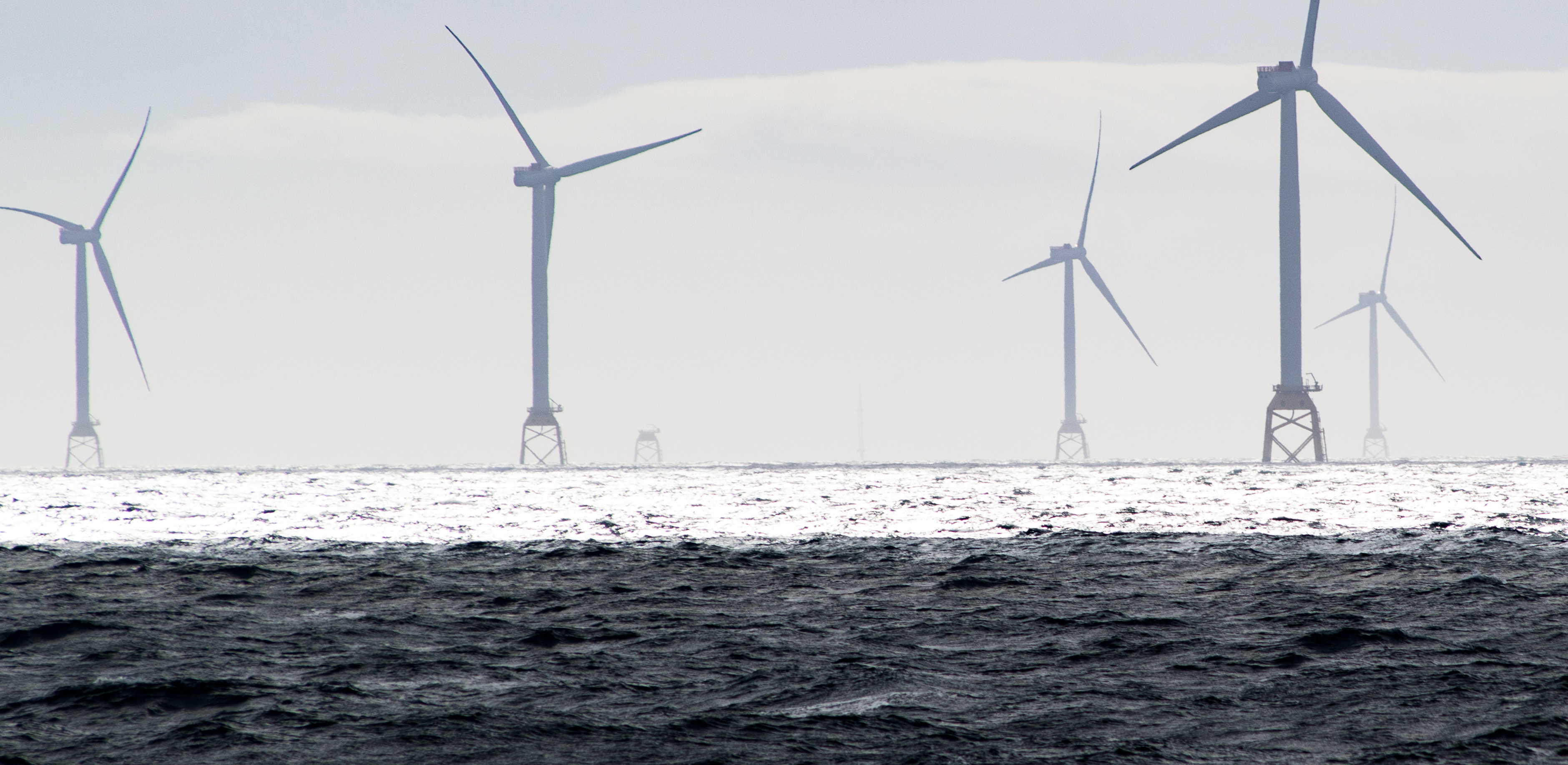Is ScotWind on course to deliver what was promised?
Two years ago, Scotland was promised a renewables revolution that would have a “transformational” impact on the economy.
Some of the biggest energy players in the world were behind bids for a new stake in the North Sea. Winners in the ScotWind leasing round claimed the rights to build the next generation of offshore windfarms across an area of seabed spanning more than 7,000km² and capable of generating 28.6 gigawatts of cleaner energy – equivalent to more than five times Scotland’s current need.
Scotland already generates more renewable electricity than it uses, with record production levels in the latter half of 2023 pushing net exports to other UK nations up to an estimated £1.5bn for the year. And it has a strong record in offshore renewables. Turbines have been turning on Hywind Scotland, the world’s first commercial floating windfarm, off the coast of Peterhead since 2017, while the deepest fixed offshore windfarm on the planet – Seagreen in the Firth of Forth – has been operating since late last year.
But with ScotWind, the aim is to supercharge renewables; where the black gold rush of the 1970s anchored the economy to fossil fuel production, the scheme is aimed at creating the same kind of benefits from wind, whipping up jobs, investment, and secure power supplies at the same time as environmental benefits.
If delivered, the results will not just keep the lights on here, but provide enough power to do so in other countries too, with Scotland becoming a major exporter of renewable energy. “ScotWind puts Scotland at the forefront of the global development of offshore wind, represents a massive step forward in our transition to net zero, and will help deliver the supply chain investments and high-quality jobs that will make the climate transition a fair one,” said then first minister Nicola Sturgeon.
But anyone who thought delivery would be made at a rate of knots would have been wrong. Major infrastructure projects take time, lots of time, and planning consent forms have been filed for just one of the 20 schemes, of which most are floating facilities and the remainder fixed to the ocean floor. And there’s no timeline or indication as to when others will submit their plans to governing officials.
The first out of the gates is the multi-billion pound West of Orkney Windfarm. Whereas most ScotWind projects are dotted around the east coast, this scheme is earmarked for the waters west of the northern archipelago and 25km north of the Sutherland coast. If all goes well, it will deliver its first power in 2029 from up to 125 turbines on fixed foundations.
The windfarm is being developed by a team in Edinburgh, Aberdeen and Orkney and is a partnership between Scots offshore wind developer RIDG, French multinational TotalEnergies and London-based wind specialists Corio Generation, which is part of Australian giant Macquarie Group. Its application for offshore consents has the backing of Orkney Islands Council, which is a statutory consultee for the necessary applications and voted to support the plan last month.
The final say will come from Scottish ministers following recommendations from the Marine Directorate, but the local authority’s support has been a boon to the development team, which has entered into a £105m investment drive aimed at developing the supply chain and bringing benefits to the islands, Caithness and Sutherland, as well as further afield in Scotland and the UK. “Our ambitious project will bring positive, long-term benefits” to the area, its development manager Jack Farnham said.
Indeed, ScotWind could generate around 9,000 jobs over the lifetime of the projects if maximum capacity is achieved, according to analysis by the Scottish Trades Union Congress (STUC). That’s for offshore wind alone, and according to recent research by the Fraser of Allander Institute economic think tank, that sector is the renewables branch that supports the largest supporter of full-time equivalent (FTE) jobs in Scotland, with onshore wind in second place. As a whole, the renewables industry had a turnover of £6.1bn in 2021, and 13,600 FTE employment.
Estimates from the Offshore Wind Industry Council suggest that both direct and indirect jobs from the industry will rise to almost 70,000 across the UK by 2026, and 30 per cent of those – around 21,000 posts – will be in Scotland, making it a bigger employer here than in any other part of Britain.
But there are fears that workers, and indeed the economy at large, will have to wait too long to feel the benefits of ScotWind. The leasing round, critics claim, failed to realise maximum prices and there are concerns that the planning process takes too long. ScotWind was “sold on the cheap,” Lib Dem MSP Willie Rennie recently told the Scottish Parliament, and “the Scottish Government now has an enormous task to support the creation of the enormous supply chain that is required to exploit the potential and build the expert staffing capacity in Marine Scotland to grant the various permissions that are required”.
“Currently, it can take up to 10 years to get a wind farm into operation. That is far too long,” he went on. “If there is a bottleneck on licensing and the supply chain is not developed here, the work and the investment could go elsewhere, along with our much-sought-after energy security and our climate change obligations. The stakes are incredibly high.”
Initially, winning ScotWind bidders were to pay a fee of up to £10,000 per km² for exclusive development rights to an area. The sum was set by Crown Estate Scotland, which manages the seabed, and which said Scottish sites would be more costly to develop than those in England, and so charges had been set at a level that aimed to avoid deterring smaller bidders. However, the option fee was later increased to £100,000km² following a comparable auction round in England and Wales.

That set the Scottish Government up for a windfall of around £760m, which it said would be reinvested in the energy sector to address the “twin climate and biodiversity crises”. But in January, Deputy First Minister Shona Robison confirmed £200m of the total was being used to shore up the 2024-25 Scottish budget and “support public services”. Last month she told parliament the “financial position has improved” to the extent that she was “working towards entirely removing any utilisation of ScotWind fees while still achieving a balanced budget”, with further details about the planned usage of the monies expected in the upcoming medium-term financial strategy.
Answering questions from Rennie and former finance secretary Kate Forbes about the chances of establishing a sovereign wealth fund based on the funds, Robison said the devolution settlement means this is not possible and her team is working “closely with Crown Estate Scotland to ensure that we realise maximum economic benefits for ScotWind licence fees, and that we protect the value of proceeds that remain available for spending in future years”.
However, the initial fees aren’t the end of the income that could be generated by ScotWind, with developers pledging to invest an average projection of £1.5bn per project. They are also required to pay rent based on the megawatt production capabilities of the completed wind farms and it is this that Crown Estate Scotland says will bring in the majority of the revenue from the leasing round, not the option fees.
Still, that hasn’t satisfied some, with Labour MSP Alex Rowley citing research from the Common Weal think tank in a debate last month in which he said the country’s offshore energy resources had been “massively undervalued”. “Common Weal found that three offshore wind auctions that took place in the year following the ScotWind auction – two were in the USA and one was in England – raised 40 times as much money as the ScotWind auction. Imagine what Scotland could do with a single payment of £16.4bn, had it matched the success of the New York Bight auction, or a payment of £28bn, had it matched the success of the English auction.”
Offshore developments require a raft of permissions. The West of Orkney Windfarm submission includes “an extensive suite of assessments based on survey data collected over two and a half years”, and a separate submission has been made to Highland Council for its onshore consents. Farnham says: “The Scottish Government has a stated ambition to deploy 8-11GW of offshore wind in Scottish waters by 2030.
“As the first ScotWind project to enter the planning process, securing timely offshore consent from the Scottish Government and onshore planning permission from Highland Council will be critical if Scotland is to meet this target, which will unlock significant inward investment and with it economic and social benefits to the far north.”

Beatrice offshore wind farm | Gillian Frampton
Highland Council has also received the onshore scoping report for the Ayre Offshore Wind Farm from consortium Thistle Wind Partners (TWP), which includes partners DEME, Qair and Aspiravi. The 1GW floating facility is planned for the waters east of Orkney and the scoping report submission was described by its developers as an “important first milestone” towards achieving planning permission for grid connection work in Caithness. Bosses are aiming for early next year for the submission for planning permission in principle.
But developers say they still lack detail on some key requirements and uncertainties are affecting not only project planning, but confidence in the supply chain. There’s concern, too, about the time it takes to achieve grid connectivity in order to ship that energy back to shore. And then there’s the small matter of impacts on the natural environment.
ScotWind developers collaborated on a two-year digital aerial survey to document the habits of avian life in the North Sea, with data on 75,000 birds over an 11,550km² area collected by September last year. The project ran across two breeding seasons and, according to Michelle Quinn, director at the Scottish Government’s Offshore Wind Directorate, its outputs have shaped planning work and “will continue to inform” consenting processes. “Offshore wind energy has an important role to play in the transition to low carbon energy sources and we continue to support sustainable development that considers potential environmental, social and economic impacts,” she said.
Energy Minister Gillian Martin says the potential of the sector isn’t lost on the Scottish Government, and the latest statistics show wind remains by far the biggest contributor to homegrown renewable energy. Where hydro technologies were the second largest producer in the final quarter of 2023 at under 14 per cent, wind was worth more than 75 per cent, with overall renewables capacity growing by one tenth within a year.
“The Scottish Government’s focus on growing the green economy is paying off,” Martin said. “We will ensure Scotland continues to capitalise in a sustainable way on its natural resources to underpin the just transition to net zero, provide jobs, benefit communities and support economic growth.
“To help Scotland reap the economic benefits of this expansion in renewables we are allocating £66.9m in 2024-25 to kickstart our commitment to invest £500m over the next five years in Scotland’s offshore wind supply chain.”
So, will ScotWind have the “transformational” impact that was promised? That question is still up in the air, but there is no doubt that the potential exists for something revolutionary.
Holyrood Newsletters
Holyrood provides comprehensive coverage of Scottish politics, offering award-winning reporting and analysis: Subscribe